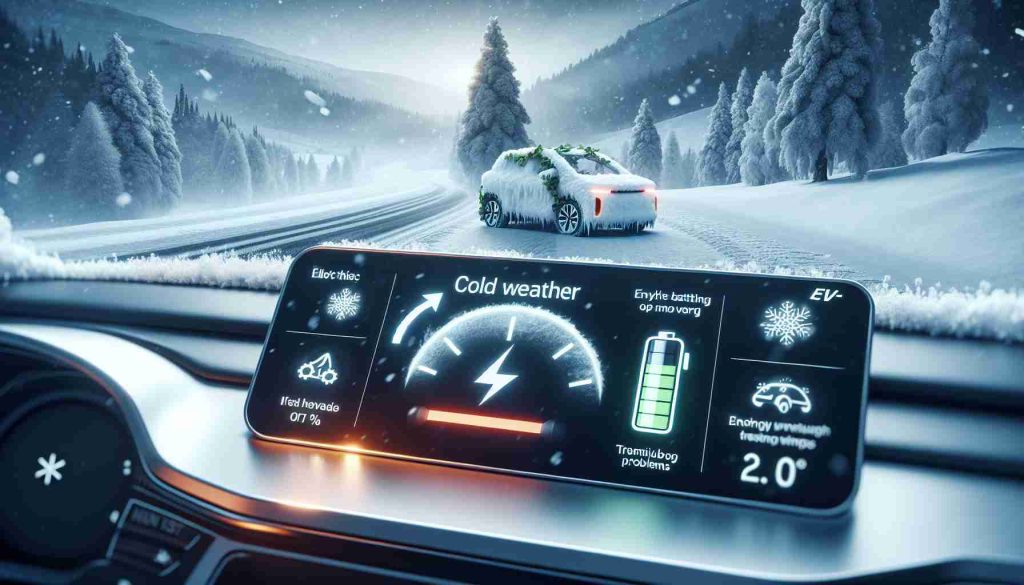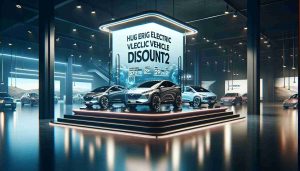Is Cold Weather Ruining Your EV? Discover the Truth
5 min read
Understanding the Cold Weather Impact on Electric Vehicles
As temperatures drop, even mild winters can create unexpected hurdles for electric vehicle (EV) drivers. In Central Florida, where chilly weather is infrequent, the cold still poses challenges that can impair battery performance and decrease driving range.
Cold weather inhibits the electrochemical reactions necessary for powering EV batteries, leading to a notable decline in performance. Studies reveal that driving range can shrink by as much as 40% under severe cold conditions, which can be limiting for many users.
To optimize your EV’s performance in colder months, consider these key strategies:
1. Keep it Covered: When possible, park your EV in a garage or sheltered area to protect it from the cold, which helps in maintaining battery efficiency.
2. Protect Charging Equipment: Although freezing isn’t common, utilize protective covers for your charger to avoid any potential freezing issues.
3. Warm-Up Period: Allow your EV to warm up before driving. Use the preconditioning feature while charging to make sure both the battery and interior are primed for action.
4. Regularly Check Battery Levels: EV batteries may drain faster in the cold. Regular checks ensure you won’t be caught off-guard.
5. Tire Pressure Matters: Cold temperatures can affect tire pressure. Check it frequently to enhance traction and safety.
6. Map Out Charging Stations: On long trips, plan for nearby public charging stations to stay confident in your range.
By following these tips, you can effectively maintain your EV’s performance, ensuring a smoother driving experience, even when temperatures drop.
Broader Implications of Cold Weather on Electric Vehicles
As electric vehicles (EVs) become a staple in the transportation landscape, understanding their performance in cold weather is not just a concern for individual drivers—it raises important questions about the future of sustainable transport and its larger societal implications. The impact on driving range, particularly in colder climates, underscores the need for improved battery technology and infrastructure.
A significant drop in EV performance during winter months could hinder broad adoption in regions with harsh climates, potentially slowing the transition away from fossil fuels. This transition is critical, as transportation accounts for approximately 29% of total greenhouse gas emissions in the United States. By ensuring EVs perform optimally and reliably regardless of temperature, it’s possible to reinforce the public’s trust in electric mobility solutions.
Furthermore, colder weather poses challenges for charging infrastructure. The reliance on public charging stations must be reassessed, with attention to protecting equipment from the elements. Innovative solutions, including climate-controlled charging stations, may emerge as demand grows.
In the long term, ongoing advancements in battery technology—such as solid-state batteries—promise better performance under extreme conditions. This future innovation could lead to widespread acceptance of EVs globally, thus reshaping the automotive industry and contributing to cleaner air and lower carbon emissions. In essence, how we respond to these cold weather challenges may leave a lasting legacy on both our environment and culture, shaping the future of mobility for generations to come.
Winter Ready: How to Maximize Your Electric Vehicle’s Performance in the Cold
Understanding the Cold Weather Impact on Electric Vehicles
As winter approaches, electric vehicle (EV) owners need to be especially aware of the impact that colder temperatures can have on battery performance and driving range. While places like Central Florida may not experience extreme cold, even mild winter conditions can challenge EV functionality.
# How Cold Weather Affects EV Batteries
Cold temperatures significantly slow down the electrochemical processes in EV batteries, resulting in reduced performance. Research indicates that under severe winter conditions, EV driving range can diminish by as much as 40%. This drop can be significant for everyday users who rely on their vehicles for commuting and travel.
# Strategies for Optimizing EV Performance in Winter
To ensure that your EV performs efficiently during cold months, consider the following strategies:
1. Keep it Covered:
Whenever possible, park your vehicle in a garage or covered space. This can help maintain a moderate temperature around the battery, optimizing its efficiency.
2. Protect Charging Equipment:
Even in areas where freezing isn’t common, it’s wise to protect your charging station with covers to avoid any issues resulting from extreme cold.
3. Utilize the Warm-Up Period:
Take advantage of the preconditioning features while your car is still plugged in. Warming up the interior and battery can lead to improved performance once you hit the road.
4. Regularly Check Battery Levels:
Cold weather can lead to quicker battery drain. Regular checks will help you manage your EV’s range and avoid any surprises.
5. Tire Pressure Matters:
Cold temperatures can lead to decreased tire pressure. Regularly inspect and inflate tires as necessary to ensure optimal traction and safety.
6. Map Out Charging Stations:
On longer journeys during winter, it’s prudent to plan your route with charging stations in mind. This will help mitigate range anxiety and ensure a smoother trip.
# Limitations and Considerations
While following these strategies can vastly improve winter driving experience, there are limitations. For instance, an EV’s range will ultimately be more variable in extreme conditions. Additionally, charging infrastructure may also be less reliable or less accessible during severe winter weather, impacting travel plans.
# Pros and Cons of Driving EVs in Winter
Pros:
– Reduced fuel costs compared to gasoline vehicles.
– Lower greenhouse gas emissions.
– Advanced features like regenerative braking can still function to some extent in colder conditions.
Cons:
– Reduced driving range due to lower battery efficiency.
– Potential for slower charging times in extreme cold.
– Limited availability of charging stations in more remote areas during winter weather.
# Pricing Trends and Market Insights
As electric vehicle technology continues to evolve, manufacturers are developing enhanced battery systems to perform better in cold weather. This innovation may include improved insulation and battery thermal management systems. As the market grows, consumers can expect a wider range of winter-capable EVs at various price points.
# Conclusion
Being proactive about winter vehicle care is essential for electric vehicle owners. By understanding how cold affects EV performance and implementing these tips, drivers can enjoy a more reliable and efficient driving experience, regardless of the winter chill. For more insights on electric vehicles, visit [yourdomain.com](yourdomain.com).



